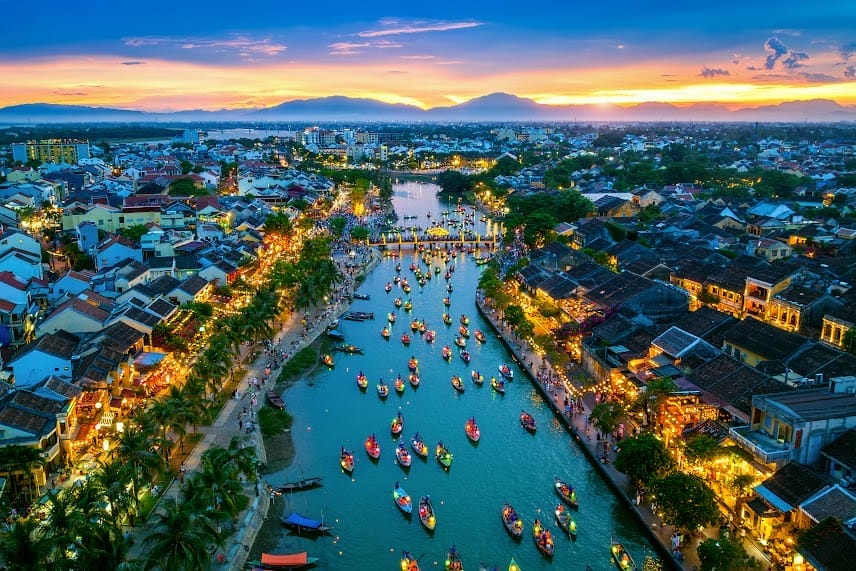The area of Yen Tu belongs to the village of Thuong Yen Cong Commune, Uong Bi Town. It is about 40km from Halong City and 14km from center of Uong Bi Town. This consist of a system of pagodas, shrines, towers and forests.
Situated within the immense arched mountain range of north-eastern Vietnam, Yen Tu Mountain bears at its peak the Dong Pagoda: at an altitude of 1,068m above sea level. The beauty of Yen Tu consists in the majesty of its mountains mingling with the ancient and solemn quietness of its pagodas, shrines and towers.
You can get to Hoa Yen Pagoda at the altitude of 534m by the cable car system recently put into operation and will see on this peak two 700-year-old frangipane trees. From there, you will continue walking up stairs to pagodas of minor note lined up along the path leading to Dong Pagoda. There you will feel like walking on clouds. If the weather is agreeable, from this summit you can admire the dramatic landscape of the northeast of Vietnam.
In spring, Yen Tu attracts a large number of visitors going on pilgrimage and sightseeing. Yen Tu Festival begins on the 10th day of the first lunar month and lasts until the end of third lunar month.
Under the Ly Dynasty, Yen Tu held the Phu Van Pagoda, with Yen Ky Sinh as its warden. But Yen Tu only really became a Buddhism centre when Emperor Tran Nhan Tong surrendered his throne to establish a Buddhist sect called Thien Truc Lam and became the first progenitor with the religious name Dieu Ngu Giac Hoang Tran Nhan Tong (1258-1308). He ordered building hundreds of constructions, large and small on Yen Tu Mountain for leading a religious life, sermonizing. After his death, his successor, Phap Loa Dong Kien Cuong (1284 – 1330) the second progenitor of Thien Truc Lam, compiled a set of book “Thach that ngon ngu†and ordered the building of 800 pagodas, shrines and towers with thousands of value statues throughout 19 years of religious life. Some famous pagodas are Quynh Lam, Ho Thien. There is the third progenitor of Thien Truc Lam, Huyen Quang Ly Dao Tai (1254 – 1334), in the sermonizing centre of Phap Loa.
Passing through to the Le and Nguyen Dynasties, Yen Tu became the focal point of Vietnamese Buddhism, and was often subject to restorations. It is a meeting place of different styles from various historic periods: visible in the many different designs and decorations that ornate its constructions.






